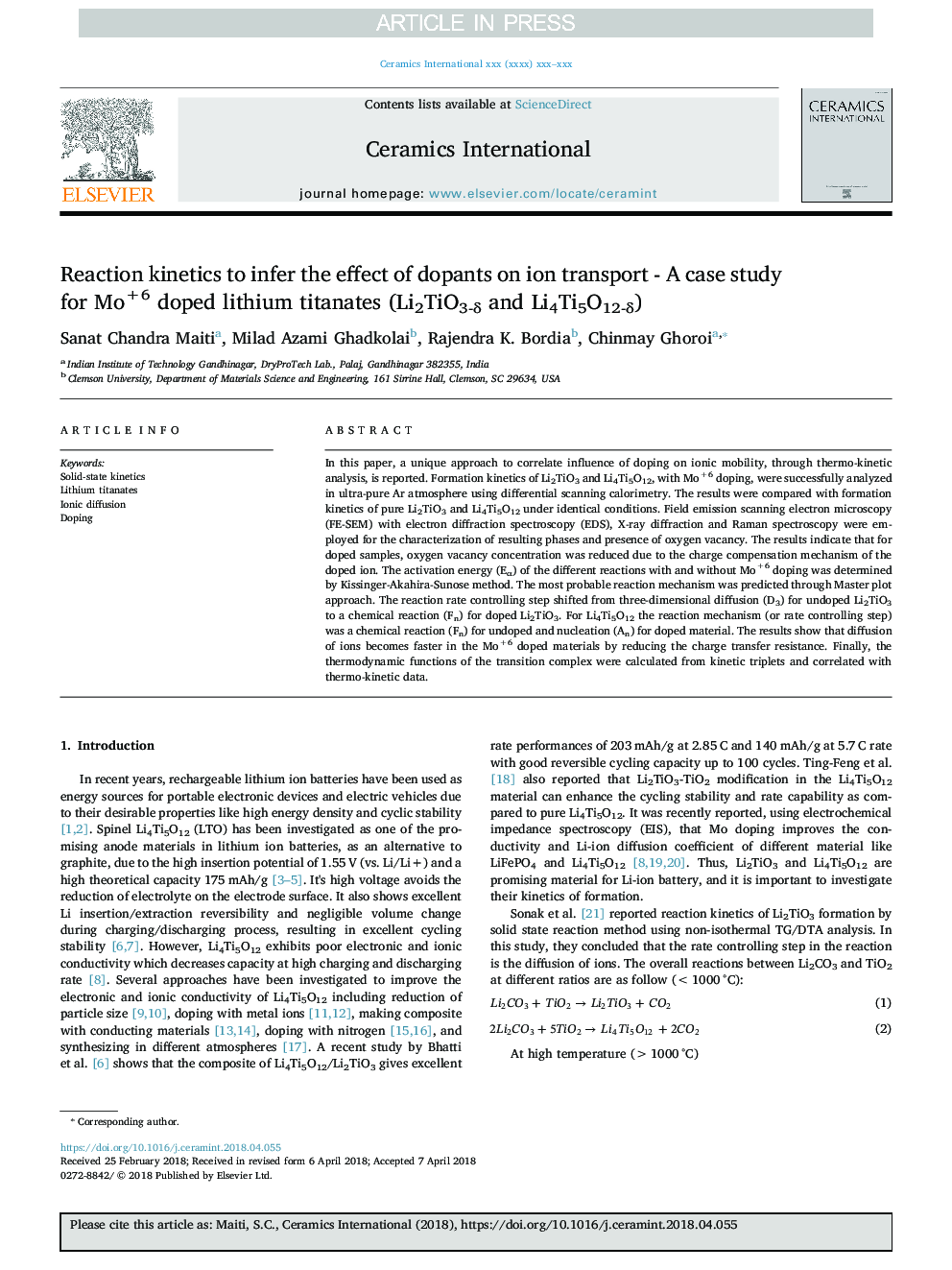| Article ID | Journal | Published Year | Pages | File Type |
|---|---|---|---|---|
| 7887151 | Ceramics International | 2018 | 13 Pages |
Abstract
In this paper, a unique approach to correlate influence of doping on ionic mobility, through thermo-kinetic analysis, is reported. Formation kinetics of Li2TiO3 and Li4Ti5O12, with Mo+6 doping, were successfully analyzed in ultra-pure Ar atmosphere using differential scanning calorimetry. The results were compared with formation kinetics of pure Li2TiO3 and Li4Ti5O12 under identical conditions. Field emission scanning electron microscopy (FE-SEM) with electron diffraction spectroscopy (EDS), X-ray diffraction and Raman spectroscopy were employed for the characterization of resulting phases and presence of oxygen vacancy. The results indicate that for doped samples, oxygen vacancy concentration was reduced due to the charge compensation mechanism of the doped ion. The activation energy (Eα) of the different reactions with and without Mo+6 doping was determined by Kissinger-Akahira-Sunose method. The most probable reaction mechanism was predicted through Master plot approach. The reaction rate controlling step shifted from three-dimensional diffusion (D3) for undoped Li2TiO3 to a chemical reaction (Fn) for doped Li2TiO3. For Li4Ti5O12 the reaction mechanism (or rate controlling step) was a chemical reaction (Fn) for undoped and nucleation (An) for doped material. The results show that diffusion of ions becomes faster in the Mo+6 doped materials by reducing the charge transfer resistance. Finally, the thermodynamic functions of the transition complex were calculated from kinetic triplets and correlated with thermo-kinetic data.
Related Topics
Physical Sciences and Engineering
Materials Science
Ceramics and Composites
Authors
Sanat Chandra Maiti, Milad Azami Ghadkolai, Rajendra K. Bordia, Chinmay Ghoroi,
